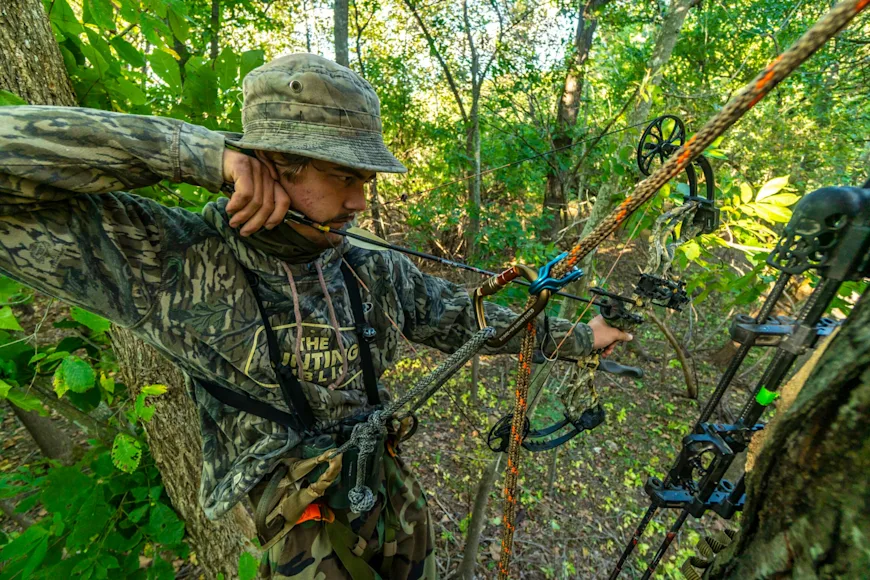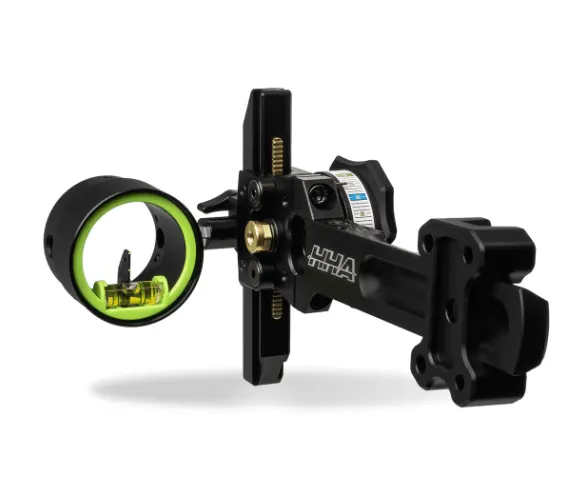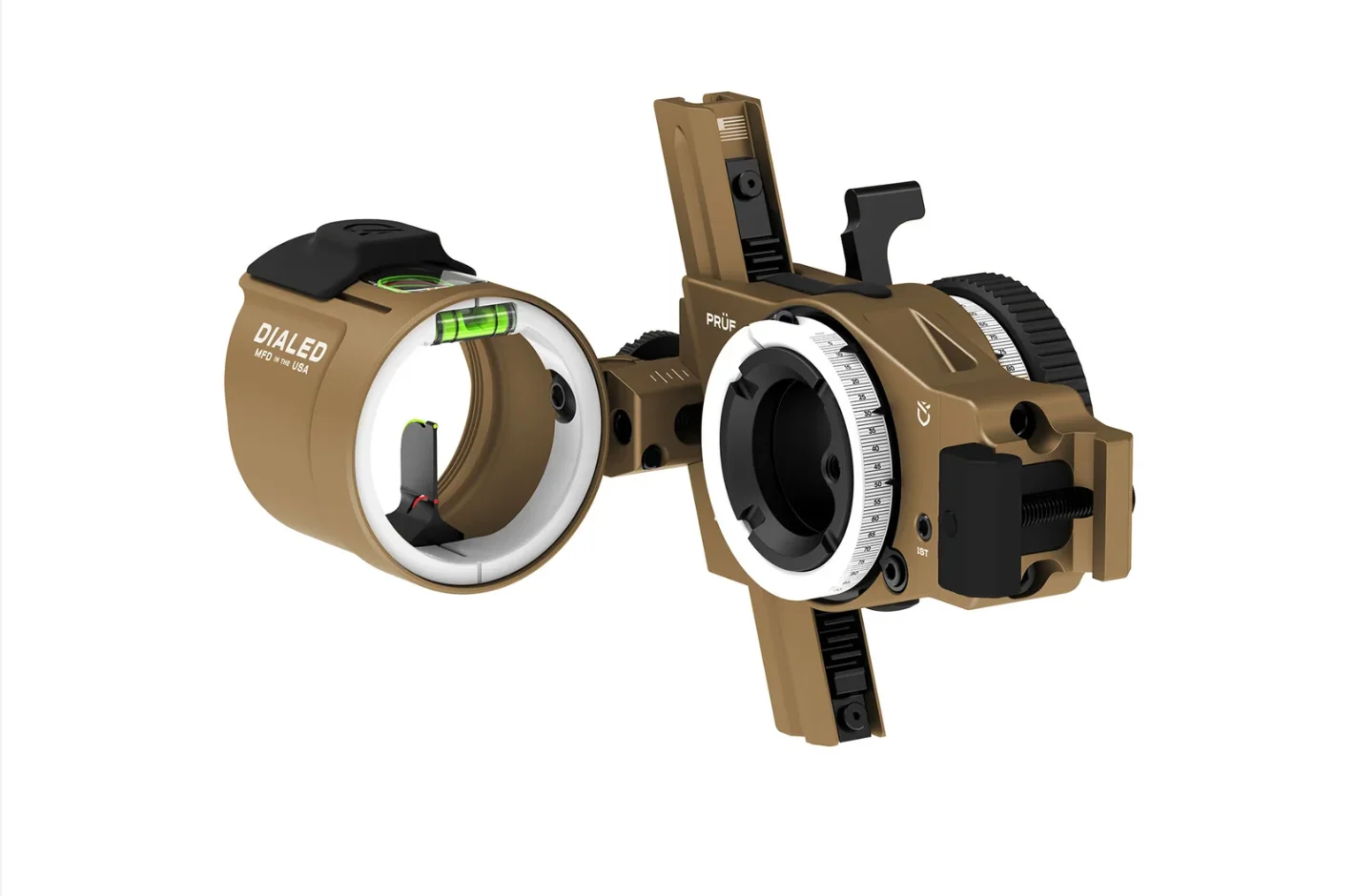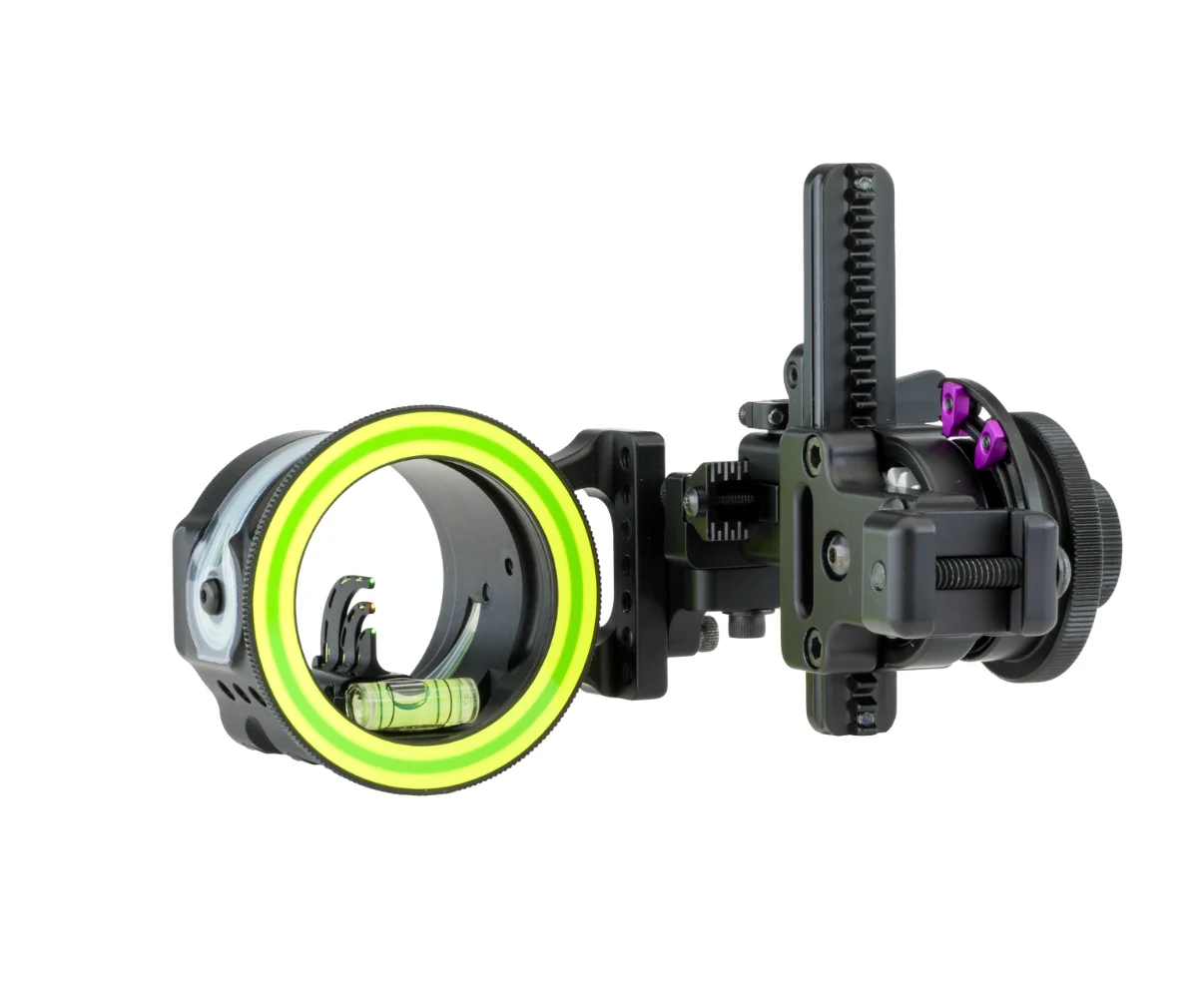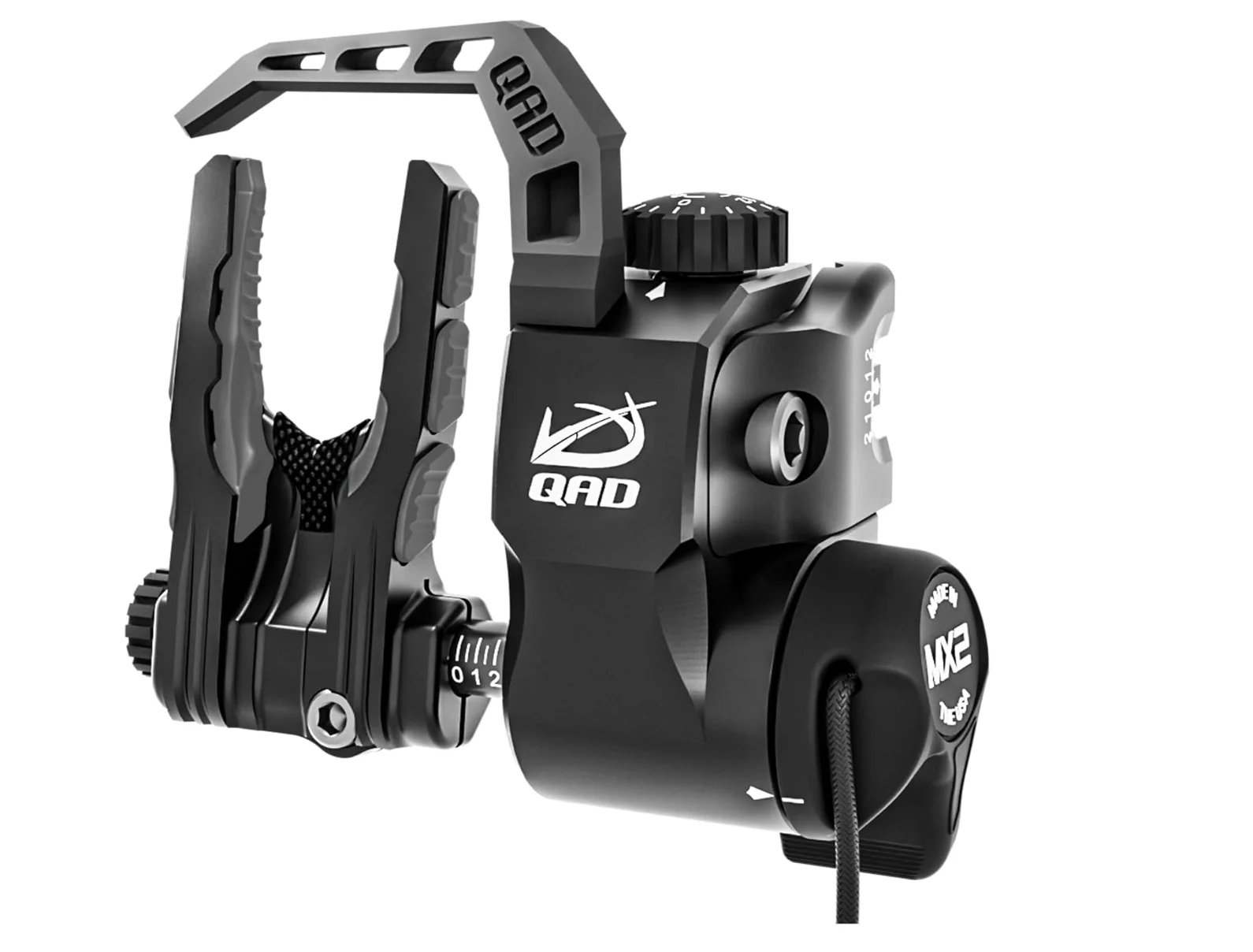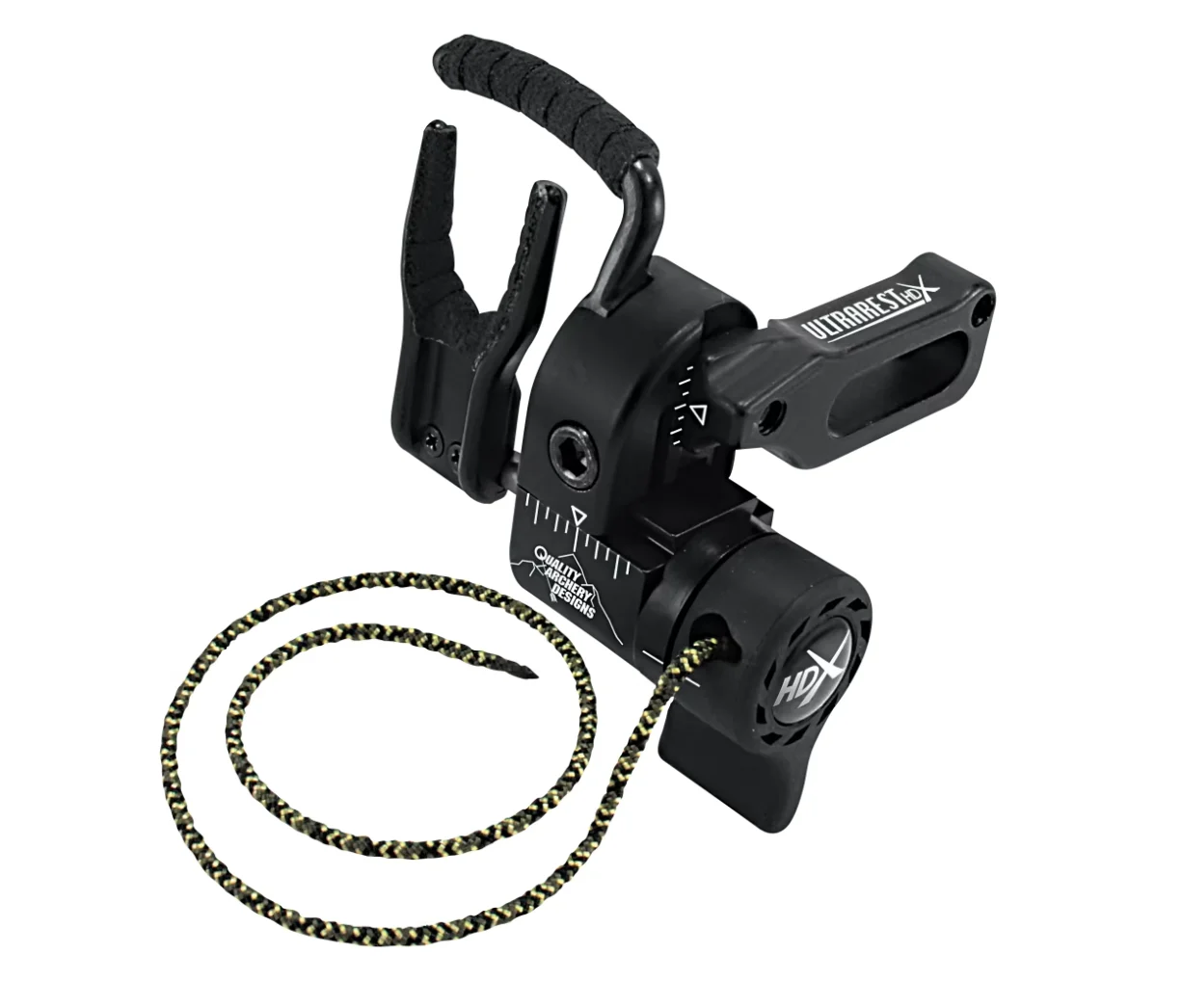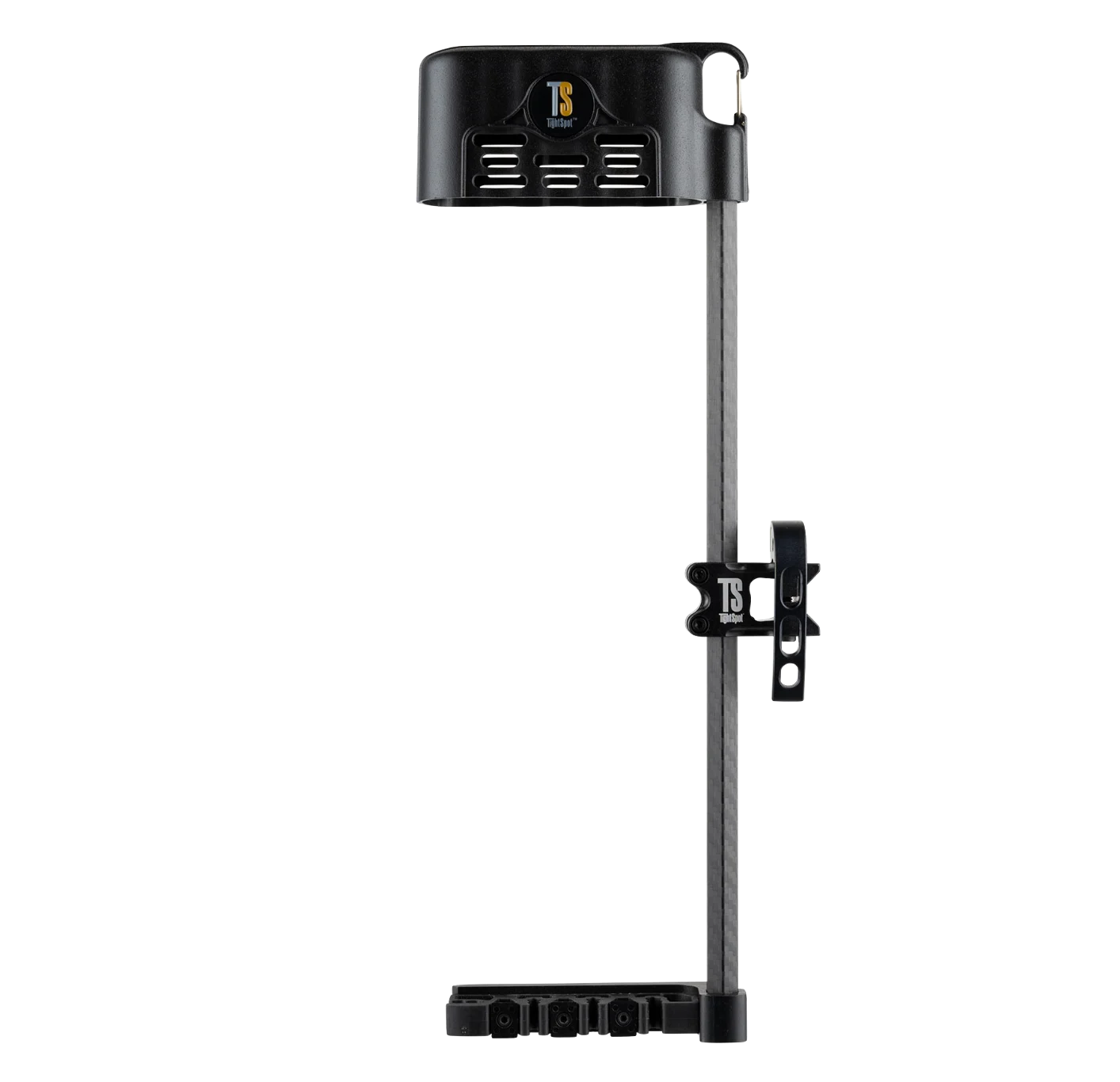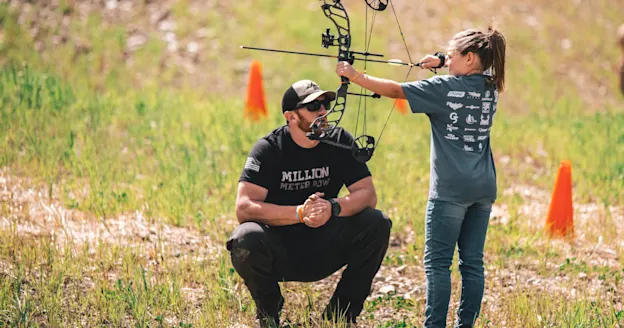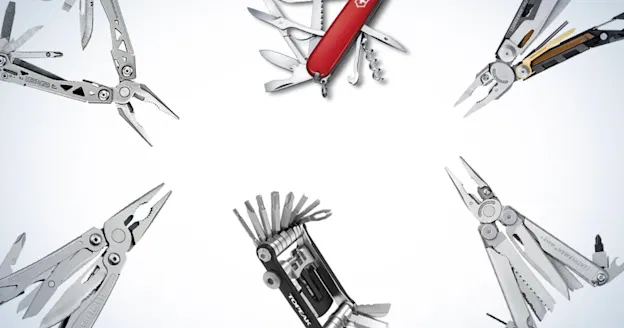We may earn revenue from the products available on this page and participate in affiliate programs. Learn more ›
For the bowhunter, choosing the best bow accessories can be confusing. Why? Options. There are tons of good sights, rests, and quivers on the market for sighting in your bow and improving your accuracy. So, how do you find the best accessories for your compound bow? You take a long, hard look at how you hunt, what you hunt, and where you hunt. Then study the information below and find what works best for you.
I broke down my favorite bow accessories for this year into three categories: Sights, rests, and quivers. Here are some of the best aftermarket accessories you can add to your bow to improve accuracy and performance both in the whitetail woods and big game hunting out west.
Sights
Rests
Quivers
Your Bow's Specific Model
Sights
HHA NYTRX Pro
Features
Side, Pic, and Dovetail mount systems
1-pin, 2-pin, and 3-pin configurations
.010 and .019" pin sizes
Left and right-hand models
Multiple color options
Pros
Vibrant pins
Vertical and horizontal pin configurations
Two-stage windage adjustment (macro and micro)
Repositioned gear rack for extended range
Cons
Expensive
For years, HHA has dominated the single-pin landscape, and to some degree, it still does. For 2025, HHA keeps its single-pin roots but adds a 2-pin option, giving hunters a second aiming point on the single vertical plane. The 3-pin option is a horizontal design.
HHA repositioned its smooth gear rack to provide increased range, and the smaller-sized housing with internal sight ring also helps you shoot arrows to further distances without worrying about housing interference. All axes (1st, 2nd, and 3rd) are independently adjustable, and the new 1st axis adjustment means your sight will always travel level to your bow, which is critical to downrange accuracy. The NYTRX Pro also has a removable sight wheel, allowing you to swap arrow setups in seconds.
Dialed PRUF Mover
Specs
Picatinny and Riser mount options
10 oz
Right and left-hand models
Multiple color options
Multiple pin configurations
Pros
Light
Durable
Angled elevation rail
Micro-adjust windage
Dual sight wheels
Cons
Expensive
When Dialed sights hit the market three years ago, all I saw was a sight with a lot of eye appeal and color customization options. While that hasn't changed, I'm on the Dialed bandwagon and the PRUF is the reason why. At $560, the sight is incredibly expensive; however, the angled elevation rail and smaller housing allow for increased arrow clearance and longer yardage. I like the top-mounted level; it's much easier to see at full draw. A top-mounted, adjustable sunshade also allows the archer to adjust the amount of sunlight coming into the housing.
The sight is available in multiple mounting options, pin sizes, and colors, but also comes with dual yardage wheels. One wheel outside and one wheel inside lets the bowhunter run the same tape for easier viewing, or you can run two different tapes for a pair of arrow setups.
The housings—Dialed calls them MAGS—come in single, three, and five-pin configurations. If you go the five-pin route, the only pin orientation option is vertical. If you go the single-pin route, the only option is vertical. However, if you opt for the three-pin option, you have a choice between vertical and horizontal configurations. The sight pins are bright, the sight is extremely light, and I like that all three axes are labeled and adjustable via a single set screw.
Spot-Hogg Boonie PM
Specs
Multiple pin configurations
.010 and .019" pin sizes
Left and right-handed models
PM, Dovetail, and Hardmount options
Pros
Vertical and horizontal pin options
MRT Rings
Redesigned yardage wheel locking knob
The yardage wheel is removable
So durable
Cons
Still a tad heavy
I prefer the Boonie PM in Spot-Hogg's Triple Stack housing. Though multiple mounting options and pin configurations are available, the Triple Stack gives three immediate yardages via three purple indicators that can be individually adjusted.
Shots out West tend to be longer, and you'll like the uncluttered housing. The Triple Stack sports three individual posts in a vertical line. Spot-Hogg also slimmed down the sight, cut weight, and retained its industry-leading durability. The sight is a tank.
Bowhunters will appreciate the removable yardage wheel, which makes adding a sight tape easy. Plus, bowhunters can set up different wheels with different tapes and instantly switch to new arrows. The rack-and-pinion rail system is silk and remains smooth even when wet and dirty. The Boonie Series features first, second, and third-axis adjustments. The yardage wheel locking knob is now inside the yardage wheel, which is a much better location. Spot-Hogg includes its MRT sight rings.
Rests
QAD UltraRest Integrate MX2
Features
6 oz
.0019" per click windage and elevation adjustment
Integrate Mount System
Double-Locking Clamp
Pros
Redesigned capture bar
Rubber capture bar dampeners replace felt
Berger Hole damper rubber button included
7075 aluminum launcher
Thumb-wheel lever load
Cons
No limb-driven model available
A rest I've toted across the West, QAD's Integrate MX2 is as reliable and accurate as they come. The Integrate mounting system attaches the sight to the back of the bow's riser, and the two-part locking system ensures absolute lockdown, eliminating the chance of rest-bar movement.
The launcher arm felt is out, and replaceable rubber dampeners are in. QAD offers dampeners in multiple color options for bow customization, and these dampeners last three times longer than felt, helping to absorb vibration. QAD still provides a small piece of felt, which is attached to the bottom of the launcher arm to allow the arrow to glide over.
Windage and elevation adjustments are simple, and one revolution of either dial provides micro .0019" adjustments per click. This is one of the most straightforward cable-driven rests on the market, but it features enough purposeful technologies to make it the very best.
QAD UltraRest HDX
Those who hunt the dense woods for whitetails and elk can opt for a rest like a Whisker Biscuit. However, many will be seeking a slightly more accurate rest option. QAD’s UltraRest HDX is a great choice. The rest is sleek, and a timing mark makes tuning a breeze. A containment bar keeps the arrow cradled in the launcher arm, and the rest will only drop away when an arrow is fired. This means you can let down without the launcher arm dropping. Lock-down technology prevents the launcher arm from hitting the arrow shelf and bouncing back up at the shot.
Quivers
TightSpot AirLock
Features
One piece
4-arrow quiver
Vented hood
8.75 oz
16 in" long
Pros
Holds all arrow sizes tightly
Removable
Secure attachment
Hugs the bow's riser
Cons
$200 is a lot for a quiver
TightSpot makes excellent quivers, and if you don't hit the woods with a quiver made by the manufacturer of your compound bow, a TightSpot is your next-best option, and in some instances, your best option. You can't go wrong with TightSpot.
At 8.75 ounces, the AirLock is ultra-light, and it fits tightly to the bow to boost balance. I hate a quiver that feels awkward when mounted. This one doesn't. The VersaClip integrated hanging hook with quick-connect latch is ideal for treestand hunters, and the oversized quick-release lever makes attaching and detaching the quiver fast, easy, and quiet. Most importantly, the AirLock features a Bulldog Gripper with individually adjustable wedges to adapt to any arrow diameter. The longer and larger hood protects fixed-blade, hybrid, and mechanical broadheads.
Your Bow's Brand Quiver
Quivers aren't sexy. They don't often get their own review section in a magazine or website feature. However, they are critical. Whether you plan to shoot with your quiver on, take it off, or do both depending on the situation, you need a quiver to carry your arrows when you're hunting.
In recent years, bow manufacturers such as Hoyt, Mathews, and PSE have created quiver-specific models that fit their flagship bows. Outside of a TightSpot, which will still require mounting the quiver to the sight backet, a bow manufacturer's quiver is your best option. These quivers mount to select sections of the riser with rods, screws, etc., to keep weight down and improve bow balance.
How to Choose the Best Bow Sight
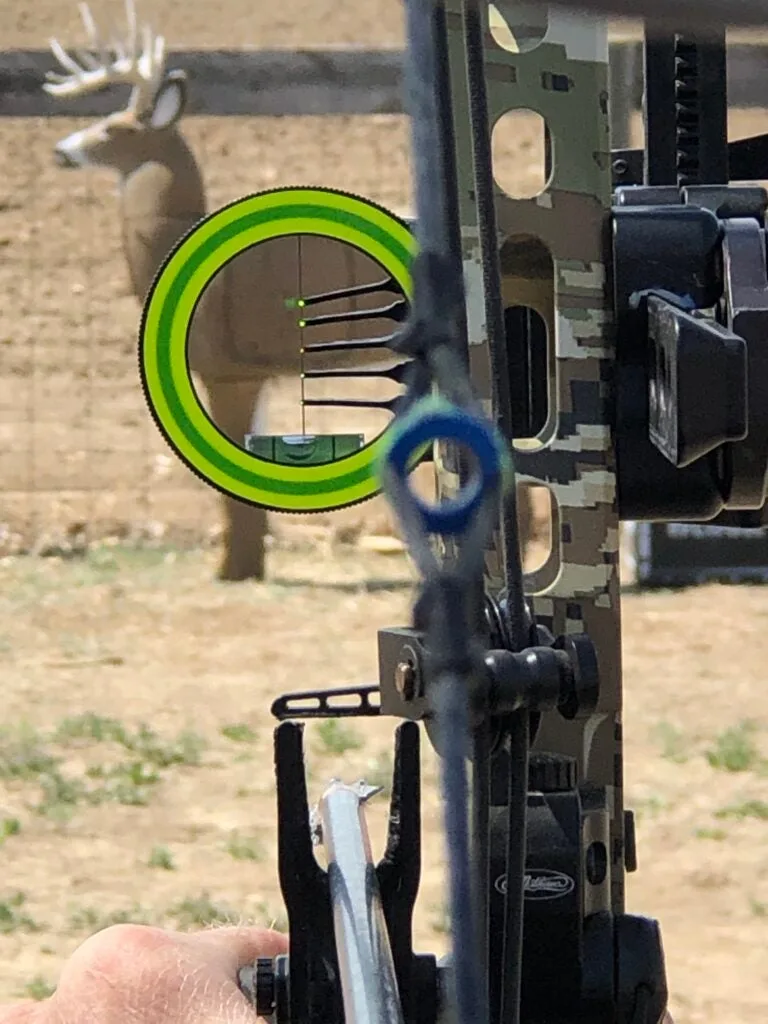
In terms of upgrades, selecting the best bow sight for your setup should be your top priority. If you’re a hunter who will spend the majority of your time in treestands or ground blinds waiting on whitetails, shots will typically be inside of 40 yards. For this reason, I recommend a dial-to-the-yard, single-pin, or a tried-and-true standard five-pin sight. These sights are a breeze to set up. As long as you don’t get carried away with features like custom pin size, magnifiers, dovetail bars, and the like, you won’t have to shell out too much coin.
If you’re a western spot-and-stalk hunter, I recommend a moveable sight. Shots out West tend to be longer, and precision is a must. Growing in popularity among the Western crowd is the three-pin slider. You have three standard horizontal pins in the housing with this type of sight, and your bottom pin, once the sight wheel is unlocked, becomes your mover. Attached to the yardage wheel will be your sight tape, and a yardage indicator needle makes dialing to the exact distance easy. Multi-pin movers are also available in four-pin, five-pin, and other custom multi-pin options. These sights, due to their intricate design and features like third-axis tuning, micro-adjustment, and dovetail mounting systems, tend to be a bit pricey. But when hunting out West, they are worth every penny. These sights also work great for those looking to up their 3-D archery game.
How to Choose the Best Bow Rest
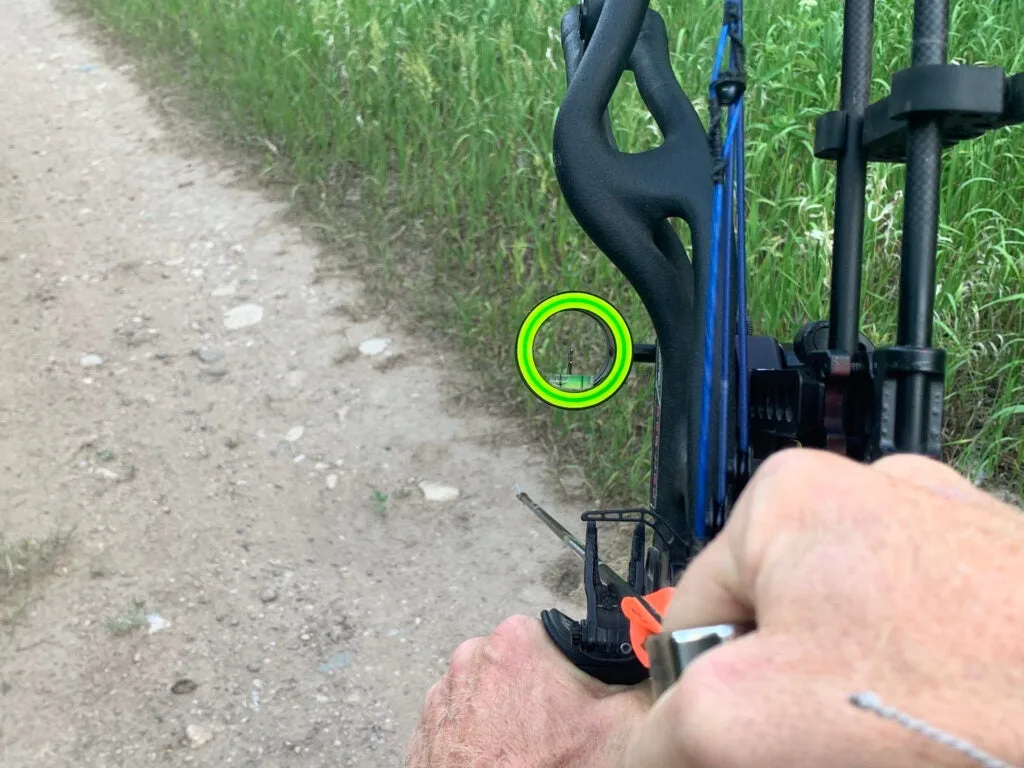
Like choosing a sight or any other attachments, picking the right rest is all about looking at where, how, and what you hunt. I have many friends in the Midwest and East who use a Whisker Biscuit or similar fixed-position capture rest for hunting. In today’s technology-rich world, many label these rests obsolete for any bow setup, but that’s not the case. A fixed-position capture rest that doesn’t drop away at the shot is easy to set up and tune. And it will provide excellent accuracy to about 50 yards. With no moving parts and a design that holds arrows at the ready, rest malfunction, even when hunting in frigid temps, is almost impossible. These rests have withstood the test of time and are a favorite among those who seek simplicity and durability.
Those looking to discover just how accurate they can be and like sending carbon at extended distances, will want a drop-away rest. These rests come in cable-driven and limb-driven models. Cable-driven rests have a timing cord that attaches to or passes through the downward-moving cable, which raises the rest’s arm during the draw. Limb-activated models have a timing cord that is much longer and connects to the top or bottom limb to raise the launcher arm when the bow is drawn. I’ve used both. I prefer the shorter timing cord and placing it between the strands of my down cable. However, limb-activated rests are super easy to set up. And if something goes wrong in the field, they’re easier to get back up and running.
The real advantage of a drop-away rest is that once the rest is timed, there is zero contact as the arrow passes over the arrow shelf and takes flight. No arrow or vane contact means cleaner flight and more consistent downrange accuracy. Most of today’s drop-away rests feature micro-adjust windage and elevation. They also have a capture bar to keep the arrow from falling out of the launcher arm, and multiple other accuracy-enhancing features.
How to Choose the Best Bow Quiver

Quivers probably get the least amount of attention, and for some bowhunters, I see why. For others, quiver choice should be weighed and considered as carefully as any other accessory. If you’re a whitetail hunter, and you plan to take your quiver off the second you get in a tree or blind, save yourself some coin and get a basic quiver that is easy to put on and take off, holds arrows tight, and comes with a tree hook. There’s zero point in getting technical if the quiver is coming off the bow. The same goes if you’re a spot-and-stalk hunter or you like to call rutting bull elk close, but you always take your quiver off before the shot, heed the advice above. My only additional recommendation here is that you put a premium on buying a quiver with durable construction, given the terrain you're hunting.
Those who hunt and shoot with their quiver mounted to the bow, however, need to find a model that hugs the riser tightly and adjusts up, down, in, and out. The hood design should keep arrows hushed at the shot, and the arrow grippers should hold shafts tightly to prevent any rattle. These quivers will be more expensive, but they promote accuracy by helping you achieve a balanced feel at full draw.
FAQS
Q: What accessories should I get for my compound bow?
The bow-mounted accessories detailed above are pretty much must-haves. However, there are a few additional accessories you may want to consider, including a stabilizer, a sling, and a kisser button. Stabilizers mount to the threaded hole on the front of the riser beneath the shelf. Their purpose is to absorb noise and vibration and to help you perfectly balance your bow. Small hunting stabilizers, like the 6-inch Apex Gear End-Game, do the former and help some with the latter. However, if you truly want to balance your bow, you need a longer front stabilizer paired with a back bar, such as the Bee Stinger Sport Hunter Xtreme Kit.
A kisser button, which attaches to the string between your peep sight and D-loop, simply gives you another anchor point. Resting it against the corner of your mouth on every shot can improve consistency. A wrist sling attaches at the stabilizer port and wraps around your wrist. Ideally, you don’t want to grip a bow’s handle like a hammer, but rather shoot with a fairly open bow hand. The sling prevents you from dropping the bow after the shot. It isn’t necessary, but it helps some shooters maintain an open grip through the shot, without grabbing at the handle too early to catch the bow.
Q: How heavy should a bow stabilizer be?
There’s no easy answer to this question. Your bow stabilizer should be as long and heavy as you need it to be to help your bow perform the way you want it to. Generally, the heavier a stabilizer, the more noise and vibration it will absorb. That said, if you have an inherently quiet and dead-in-the-hand bow and you want its overall weight to be as light as possible, you might go with a small, light model or even no stabilizer. If your main goal is ultimate accuracy and you don’t mind toting some extra weight, you should get a front and back bar with adjustable weights and add just enough to perfectly balance the bow, so that when you draw and anchor with your eyes closed and then open them, the sight bubble is perfect.
Q: What reduces bow recoil?
Simple. Everything you add to your bow reduces recoil (and vibration and noise) to some degree because it makes your bow heavier. Just like a heavier gun, a heavier bow kicks less. If you have a bow with lots of recoil or hand shock, put on a heavier sight or stabilizer, or even shoot a heavier arrow. It all helps, but there’s a limit. Very few hunters want to tote around a 12-pound bow. The key is to strike the right balance, so that your bow is quiet with little recoil, but also handy enough for the type of hunting you do.
Q: What compound bow accessories will increase my accuracy?
When it comes to improving your accuracy with a compound bow, a sight, stabilizer, and bow release can all help. They’ll allow you to better see your target and hold your bow steady as you draw it back and release to minimize tiny movements that could potentially throw off your arrow. Every little bit helps.
Why Trust Us
For more than 125 years, Field & Stream has been providing readers with honest and authentic coverage of outdoor gear. Our writers and editors eat, sleep, and breathe the outdoors, and that passion comes through in our product reviews. You can count on F&S to keep you up to date on the best new gear. And when we write about a product—whether it’s a bass lure or a backpack—we cover the good and the bad, so you know exactly what to expect before you decide to make a purchase.

